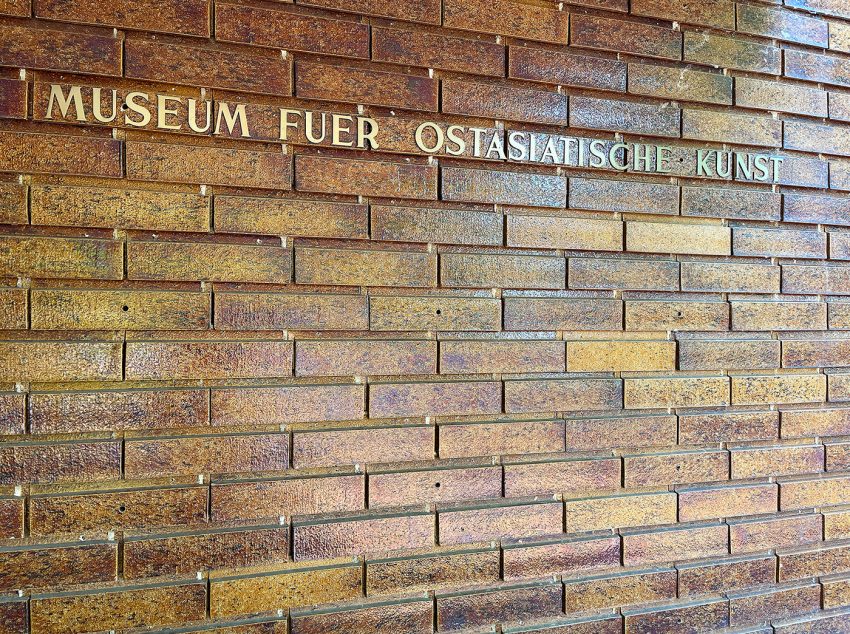
Ceramic façades
. . . . . . . . .
One of the most striking, albeit often overlooked, features of the Museum of East Asian Art in Cologne (Museum für Ostasiatische Kunst Köln) is the amazing cladding of specially designed stoneware tiles covering the façades, which were actually fired in Japan and transported to Cologne. Whenever I visit the museum, I always enjoy taking a closer look at this faux brickwork and the wonderful interplay of gritty textures and glutinous browns, reds, yellows, even greens and the rivulets of metallic blues that adorn these walls, especially when lifted in brilliant sunlight.
The museum itself houses and exhibits a treasure trove of art from China, Korea and Japan. The new building was designed in the 1960s by renowned Japanese architect Kunio Maekawa (1905-1986), a pupil of Le Corbusier. It is composed of geometric cubes grouped around a specially designed Japanese garden by the modernist Japanese sculptor Masayuki Nagare (1923-2018) and forms a symbiosis of Japanese architecture, Zen garden aesthetics and East Asian art. A perfect setting to encounter East Asian culture.
. . . . . . . . .
Museum für Ostasiatische Kunst
(Museum of East Asian Art)
Universitätsstrasse 100
50674 Köln
Germany
https://museum-fuer-ostasiatische-kunst.de/Museum-of-East-Asian-Art
. . . . . . . . .